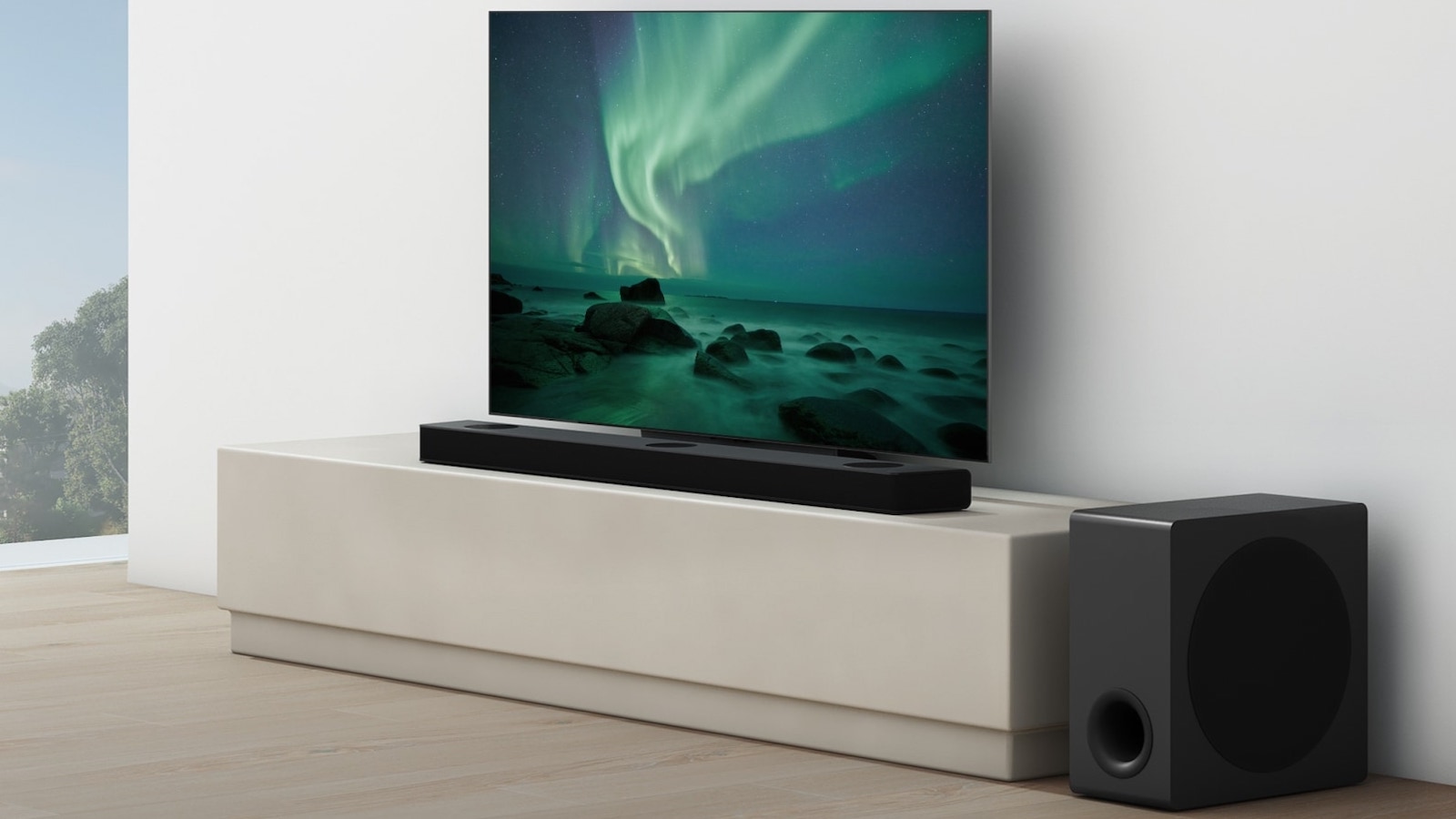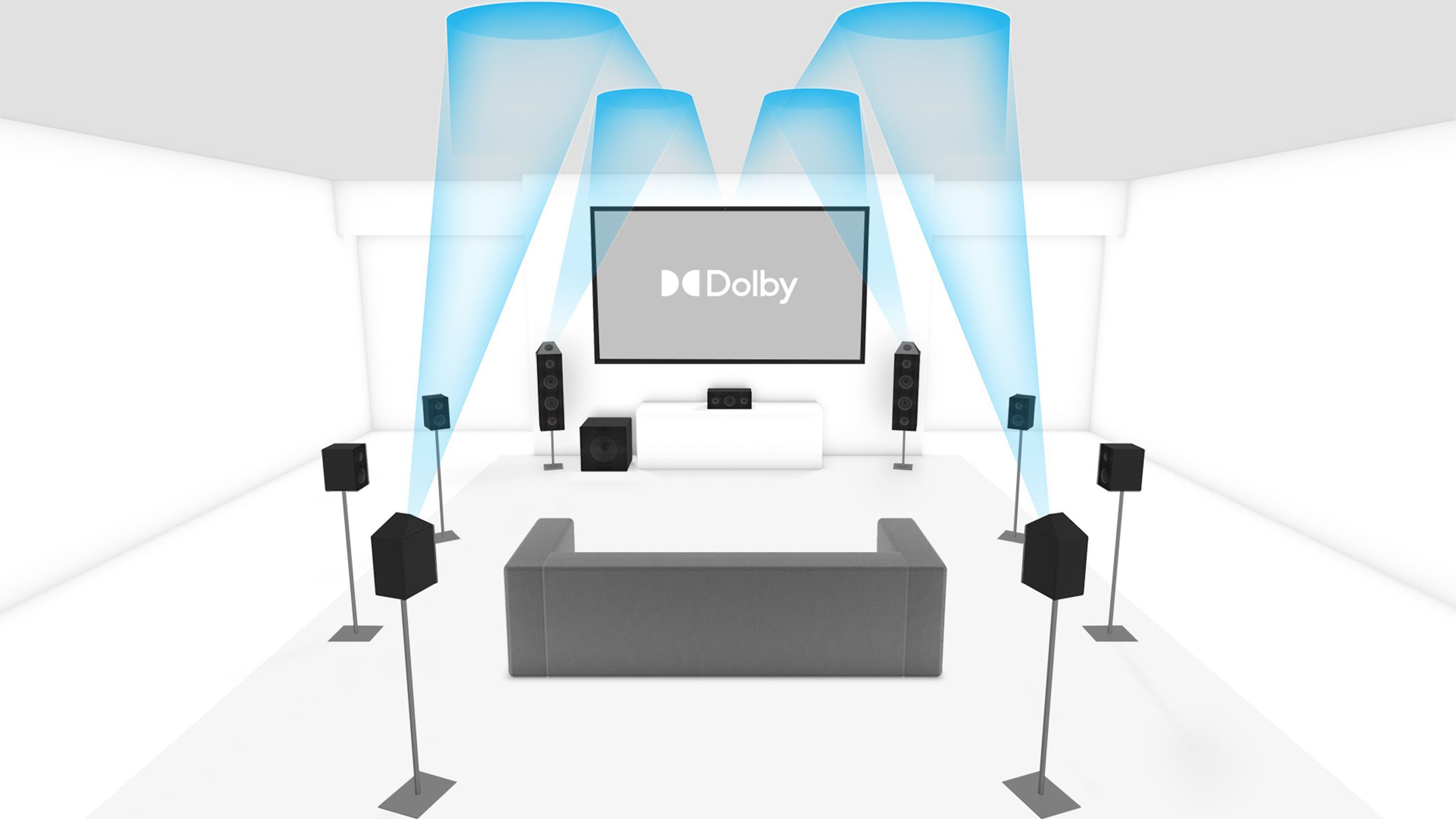LG OLED TVs' wireless lossless Dolby Atmos just started the next big home theater tech race
The wireless home theater dream is a reality

LG has revealed that Dolby Atmos audio can be transmitted wirelessly in lossless quality in its 2024 range of TVs and soundbars, at least for particular models that we’ll get into below. The technology that makes this happen is called WOWCAST, and it signifies a step forward in the evolution of home theater.
LG's Alpha 11 AI processor, found in the LG M4 and LG G4 OLED TVs, and its Alpha 9 AI processor, found in the LG C4, use WOWCAST to transmit lossless Dolby Atmos wirelessly to compatible LG soundbars. The two compatible 2024 soundbar models are the LG S95TR, the successor to the LG S95QR, and the new LG SG10TY, both of which will connect wirelessly to the premium OLEDs mentioned above.
Now, this isn’t the first example of wireless Dolby Atmos. The 2023 Samsung HW-Q990C soundbar, one of the best soundbars on the market, and other Samsung 2023 soundbars for that matter could receive Dolby Atmos wirelessly transmitted from compatible Samsung TVs (mostly from 2023) via the company’s Q-Symphony technology. But in that case the Atmos signal being transmitted is compressed, so you’re not getting full Atmos sound quality.
Dolby itself previously announced Dolby Atmos FlexConnect, a wireless ecosystem that enables Dolby Atmos audio to be broadcast to a group of speakers around a room. But rather than worry about speaker placement, FlexConnect uses what Dolby calls ‘acoustic tuning’ to adapt the sound to your room's specific layout. FlexConnect, however, is in the very early stages at present and no official products have been announced. It also doesn’t use a full Atmos setup, but rather two speakers and a compatible TV.

The future of home theater
When you think of a classic home theater setup, it will have large speakers placed in corners and head-on to get the best possible surround sound from your favorite movies. Of course, with speakers comes cables, and unless you want to hide them in walls or under floors, they’ll be trailing across the floor's surface.
During my time working in AV retail, customers wanted to get the boldest, most immersive surround sound they could but bemoaned the necessity of ‘ugly wiring.’ Some also became agitated at the thought of installers making holes in floors and walls.
LG’s announcement means that customers can now get an immersive Atmos experience not only without compromise but also without clutter. As Atmos becomes more widely available on streaming sites such as Netflix, Disney Plus and Prime Video, people will be looking to get the full home theater experience, and now LG is giving it to them, but also with a lossless option for Blu-ray playback.
Sign up for breaking news, reviews, opinion, top tech deals, and more.
What does this mean for the future of home theater? Most likely, further innovations in wireless technology. When LG unveiled its 2024 OLED lineup, it doubled down on fully wireless TVs with its flagship OLED, the LG M4. When that model is paired with the company’s new soundbars via WOWCAST, you'll have an almost entirely wireless system (it still needs power cables), and one that doesn’t make any shortcuts in quality.
It’s likely we’ll see similar tech offered by a lot of other brands. Samsung already uses its One Connect Box as a means to eliminate the number of cables linking the TV and other equipment and it remains to be seen if they too will deliver Atmos in lossless quality. Sony also has dipped its toe into wireless Dolby Atmos with its HT-A9 surround speaker package. There is nothing wrong with a little friendly competition, so we’ll hopefully see more advanced wireless audio tech in the future.
You might also like...

James is the TV Hardware Staff Writer at TechRadar. Before joining the team, he worked at a major UK based AV retailer selling TV and audio equipment, where he was either telling customers the difference between OLED and QLED or being wowed by watching a PS5 run on the LG 65G2. When not writing about the latest TV tech, James can be found gaming, reading, watching rugby or coming up with another idea for a novel.